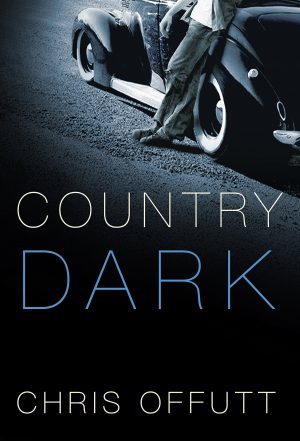Rusty Barnes's Blog: Fried Chicken and Coffee, page 4
March 13, 2018
The Balkan Route by Cal Smyth
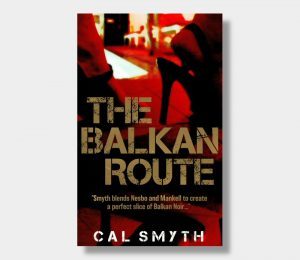 Italicized text from the Fahrenheit Press site:
Italicized text from the Fahrenheit Press site:
After a businessman is brutally murdered in Belgrade, Inspector Marko Despotović digs into the web of corruption that connects the police, politicians, drug dealers and spiritual healers as they battle over the lucrative Balkan heroin route.
Can Marko navigate his way through an increasingly complicated and dangerous investigation as he tries desperately to keep himself and his family safe?
Marko Despotovic is a Serbian police inspector with a complicated life. On one hand, there's life with his loving wife Branka and their teenaged tennis-prodigy son. On the other, there's his neighbor's college-aged daughter, living nearby, who is also Marko's mistress, and the passingly curious fact that he's a non-corrupt cop in a very corrupt world.
When he solves the murder of a local celebrity businessman, Despotovic is bothered slightly by how easily the case gets solved. What follows reflects not only the corruption of the local police force, but also the intersection of criminality and politics. The terrible reality is that Despotovic, in order to keep his life and family in good order, must become part of the corrupt system he only partly understands. For a while. And then, he becomes good at being corrupt himself, a matter hinted at in the first words of the novel.
"The silhouetted fishing boats reminded Inspector Marko Despotović of corpses that had floated down from Vukovar during the Yugoslav War. Marko turned from the view of the Danube, lit up by the rising sun, picked up his Serpico-style sunglasses and slid them into his shirt opening." There's no shortage of corpses in the narrative, and the specters of the recent wars surround the characters in both object and imagination, as a couple key scenes take place among the ruins of battles not so long past. There's also the specter of American film and the lure of easy stardom. It's a milieu to die for.
Writer Cal Smyth's command of this story rife with doublecross and complication is a marvel to read. Told in third person limited perspective, mostly from Marko's point of view but skipping around to various others as the plot demands, this book is so well characterized, Marko's plight so real, that from the reader's perspective, the seamless whole has both breakneck pace and deliberate intent. The outcome, grim yet realistic, feels inevitable and right.
Smyth spent time in Serbia during the time period in which the novel takes place, avoiding a NATO bombing, and it shows. Simple Google searches of events and names in the book reveal a writer whose intensive research for the novel nearly surpasses his clear felicity with language, from the names of well-known criminals to the names of local pop stars. There's even a self-actualization specialist who plays a central role in a plot that gives as much pleasure from unusual juxtapositions and dissonances as it does from the writing.
February 17, 2018
The Lousy Racket: Hemingway, Scribners & the Business of Literature
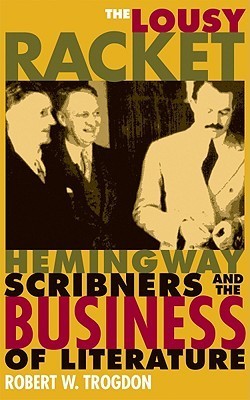 The Lousy Racket: Hemingway, Scribner's and the Business of Literature
The Lousy Racket: Hemingway, Scribner's and the Business of Literature
Robert W. Trogdon
The Kent State University Press
2007
307 pages
$30.00
While reading the first volume of Hemingway's letters published recently (they're up to volume IV now) I came across mention of Trogdon's 2007 book. Trogdon is one of the series editors, so it made sense to find this book slipped into the works cited, and I was intrigued to find out that it concentrates on Hemingway's relationship with his publisher and its chief representative, Maxwell Perkins, editor extraordinaire. A. Scott Berg discusses Perkins' role in curating the career of F. Scott Fitzgerald and Thomas Wolfe in Max Perkins: Editor of Genius, but spends surprisingly less time on his role with Hemingway. Trogdon rectifies that omission in this book, a thorough discussion of issues Hemingway faced with particular attention to sales and money concerns, as well as issues of censorship and potential lawsuits. Trogdon's sympathy lies with Perkins as editor and publisher rep, who became both cheerleader and hard-headed business realist as compared with Hemingway's often angry blusterer.
The first major issue came up with the book Scribner's took on after Hemingway's break with his first major publisher, Boni & Liveright, The Torrents of Spring. In a now famous publishing story, Hemingway used the unflattering portrait of Sherwood Anderson he wrote in Torrents to break his contract with Boni & Liveright, knowing they would not agree to publish something that satirized their leading light, which then gave him the opportunity to move to Scribner's, with whom he would spend the rest of his life.
"The most compelling reason for Hemingway's dissatisfaction with Boni & Liveright was the marketing of [his first book] In Our Time. Liveright was more interested in what Hemingway would do in the future than in his initial American publication. Short story collections typically sold badly, especially when they were the first books of unknown authors. Liveright appears to have treated the book as a lost cause right from the beginning, publishing it only to secure the talented author for the firm. Liveright ordered only 1,335 copies, indicating that a large sale was not expected." (19)
Trogdon's strength is in the numbers crunched. We learn not just that only 1,335 copies were printed, Liveright spent only $653.10 on advertising, and didn't feature the book until page 25 of its fall 1925 catalog. Trogdon's access to and analysis of the advertising budget, ad placements and catalog copy give us a much clearer picture of what really prompted Hemingway's desire to shift publishers: money.
Even so, the publisher switch didn't mean that Scribner's took a wild flyer on Hemingway and threw buckets of money at him. Trogdon reports only a $500 advance and 2,785 copies printed on Hemingway's first Scribner's book, The Torrents of Spring, with an ad budget of $796.54 in 35 venues. Not the numbers of something they expected a great deal of movement from. This seemed to create in Hemingway the bane of all publishers, the writer who constantly bitches about money.That would all change–or would it?–with Hemingway's first proper novel, The Sun Also Rises, the reason Scribner's wanted Hemingway to begin with.
Money and the pursuit of it remained a theme throughout Hemingway's time, a theme he returned to with increasing petulance and ferocity depending on how he felt at the time, given the ads he saw in the trades and general interest magazines, and how many copies of his books Scribner's printed. He remained convinced that the publisher didn't do enough to push his books of the 1930s, a time during which his popular and critical reception faded a bit from the high points of The Sun Also Rises and A Farewell to Arms, a downturn only cured by the 1940 blockbuster For Whom the Bell Tolls. Perkins at these times reassured Hemingway that the publisher remained firmly in his side, and that they were doing the best that they could, given the demands of the market and the times.
Other demands came to the fore as well, primary among them the issues of censorship and potential libel. Hemingway insisted, in his personal writing credo and in his business interests, that he never used a word without knowing it was the best word for the situation, and it quickly came to pass that his use of four-letter words commonly used would never work in the relatively staid confines of Scribners and the publishing world in general. As well, his habit of lifting real-world friends and sometimes enemies and placing them in his novels with barely-changed names and characteristics proved to be an issue.
Still, the emphasis this book places on the money trail during Hemingway's career at Scribner's: the ad budgets and placement, the contracts, the remunerative book club deal that put For Whom the Bell Tolls over the top in sales, all taken from Scribner's records and documents from the Hemingway collection, serve to remind us all of Hemingway's true perspective. First, the actual work mattered. Second, but nearly equally, the money mattered, regardless of critical or audience opinion. If you're interested in the often sobering business of literature–all dollar amounts are also listed in 2005 dollars–and Hemingway, you shouldn't overlook this book.
February 11, 2018
William Gay's Detective Novel
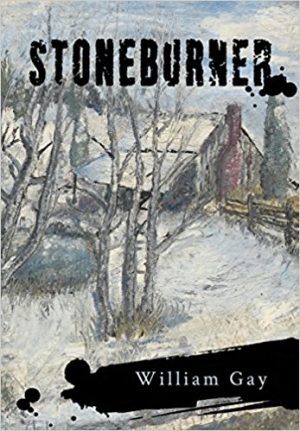 It's being released soon, according to the William Gay Archive and I think many of you will be interested. Here's the description.
It's being released soon, according to the William Gay Archive and I think many of you will be interested. Here's the description.
John Stoneburner, a jaded detective, has abandoned his office in Memphis to live on the banks of the Tennessee River. There he meets retired sheriff, Cap Holder, who made a small fortune after Hollywood produced a movie based on his exploits cleaning up the drug dealers in his rural county. Holder hires Stoneburner to hunt down his young girlfriend and a suitcase full of drug money after they disappeared at the same time. The investigation brings Stoneburner in contact with a figure from his youth, Thibodeaux, now an unpredictable town drunk. Enslaved to their past indeed, the intertwined trajectories and motives of Stoneburner, Holder, Thibodeaux and the young woman eventually collide in a crazed chase across Tennessee, Mississippi, Alabama, and Arkansas.
It's out of stock at Amazon right now because of last-minute changes, I've heard, but will be available again soon.
February 8, 2018
Southernmost, by Silas House
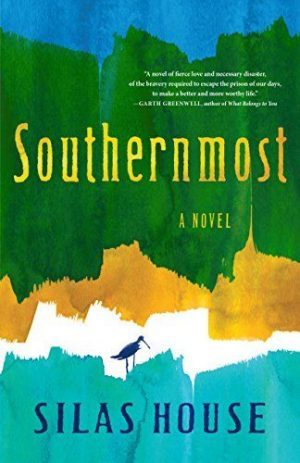 I've been looking forward to a new Silas House novel for years now. I've followed his career since I published his work in Night Train, and was extremely proud to have his blurb for my collection Mostly Redneck. His novels reveal the best of Appalachia, the power of family, and most of all a reverence for music and the natural world that continues to make me feel good when I reread them, which I do every few years. Like Chris Offutt and Chris Holbrook and Lee Smith and Breece Pancake, he writes a world and people I recognize in my bones, though the accent's a little different where I grew up in the very northern tip of Appalachia. Algonquin's promo material for the new Silas novel Southernmost follows, and I encourage you all to check it out when it comes out in June.
I've been looking forward to a new Silas House novel for years now. I've followed his career since I published his work in Night Train, and was extremely proud to have his blurb for my collection Mostly Redneck. His novels reveal the best of Appalachia, the power of family, and most of all a reverence for music and the natural world that continues to make me feel good when I reread them, which I do every few years. Like Chris Offutt and Chris Holbrook and Lee Smith and Breece Pancake, he writes a world and people I recognize in my bones, though the accent's a little different where I grew up in the very northern tip of Appalachia. Algonquin's promo material for the new Silas novel Southernmost follows, and I encourage you all to check it out when it comes out in June.
When a flood washes away much of a small community along the Cumberland River in Tennessee, Asher Sharp, an evangelical preacher there, starts to see his life anew. He has already lost a brother due to his inability to embrace his brother’s coming out of the closet. Now, in the aftermath of the flood, he tries to offer shelter to two gay men, but he’s met with resistance by his wife. Furious about her prejudice, Asher delivers a sermon where he passionately defends the right of gay people to exist without condemnation.
In the heated battle that ensues, Asher loses his job, his wife, and custody of his son, Justin. As Asher worries over what will become of the boy, whom his wife is determined to control, he decides to kidnap Justin and take him to Key West, where he suspects that his estranged brother is now living. It’s there that Asher and Justin see a new way of thinking and loving.
Southernmost is a tender and heartbreaking novel about love and its consequences, both within the South and beyond.
Blurbs:
"In Silas House’s moving new novel, a pastor wrestles with a crisis not just of faith but of all the apparent certainties of his life: a crisis of marriage, of community, of fatherhood. This is a novel of painful, finally revelatory awakening, of fierce love and necessary disaster, of the bravery required to escape the prison of our days, to make a better and more worthy life.”—Garth Greenwell, author of What Belongs to You
“This beautifully crafted novel brims with a spirit of hopeful humanity as one man’s effort to make himself a better person casts ripples in the world around him."
—Charles Frazier, author of Varina
“Southernmost engages my most deeply hidden fears and hopes. Silas House has all the gifts of a passionate storyteller, and to this book he adds the heartfelt convictions of a man willing to voice what we so seldom see in print—the ways in which with all good intentions we can mess up and go wrong, and only later try to sort out how we can win our own redemption. I love this book, and for it, I love Silas House.”
—Dorothy Allison, author of Bastard Out of Carolina
“A spiritual journey, a love story, and a classic road novel … With its themes of acceptance and equality, Southernmost holds a special meaning for America right now, with relevance even beyond its memorable story.”
—Lee Smith, author of Dimestore
“Silas House's characters are as real to me as my own family. Southernmost is a novel for our time, a courageous and necessary book."
—Jennifer Haigh, author of Heat and Light
“Southernmost is an emotional tsunami. The classic themes of great literature written about family life are upended here in a modern twist as a father and son flee one life in search of another; as estranged brothers separated by time and their judgement of one another seek redemption and through the women in their lives, antagonists in the struggle who become grace notes on the road to redemption. This is a story of faith lost and love found, and what we must throw overboard on the journey in order to keep moving. A treasure."
—Adriana Trigiani, author of Kiss Carlo
January 29, 2018
Governor Seeks to Kill University Press of Kentucky?
Please don't let this happen. From Scott Jaschik at Inside Higher Ed.
Kentucky governor Matt Bevin has proposed that some 70 small programs in the state budget be completely eliminated — as he also has proposed across-the-board cuts of around 6 percent for public higher education and most other state functions.
Bevin, a Republican, has cited tight state budgets and has not spoken on specific programs he would eliminate. But word spread this weekend that one of his targets was the University Press of Kentucky, and many authors and scholars have reacted with alarm.
While the press is based at the University of Kentucky, it is not affiliated with that institution alone. Rather, it works with all the state's public universities as well as a number of private colleges, include Bellarmine University and Berea and Centre Colleges. The press publishes more than 50 books a year and is considered particularly strong in scholarship on the state, in Civil War and other military history, and in volumes that relate to the history and culture of Appalachia.
January 21, 2018
Quick Hits–Paul D. Brazill
This post introduces something I hope will become a feature here at Fried Chicken and Coffee, quick interviews with writers in the crime or rural/Appalachian fiction scenes, and short takes on whatever writers I'm obsessed with at the moment. First on this list is Paul D. Brazill, whose work I've known of for some time via Twitter and other places. His 2012 article Brit Grit introduced me to a number of new writers on the other side of the pond, and I've asked him just a a few questions here, not wanting to take up too much of his valuable writing and teaching time.
 Paul D. Brazill's books include A Case Of Noir, Guns Of Brixton, Too Many Crooks, and Kill Me Quick! He was born in England and lives in Poland. His writing has been translated into Italian, German and Slovene. He has had stuff published in various magazines and anthologies, including The Mammoth Books of Best British Crime.
Paul D. Brazill's books include A Case Of Noir, Guns Of Brixton, Too Many Crooks, and Kill Me Quick! He was born in England and lives in Poland. His writing has been translated into Italian, German and Slovene. He has had stuff published in various magazines and anthologies, including The Mammoth Books of Best British Crime.
In your 2012 Brit Grit blog post, you reference Ted Lewis as the father of the movement. In what ways do you see his lineage in today's crop of writers?
I think it’s in the timbre of the writing — people like Ray Banks, Charlie Williams and Allan Guthrie, for example, have a strong sense of the absurd. The ridiculousness of everyday life. There is also a real focus on character – minor characters, the settings, the dialogue, are all well-drawn.
I’ve said before that I think the difference between crime fiction and noir is that crime fiction is about bringing order to chaos and noir is about bringing chaos to order. Or even making the chaotic more so!
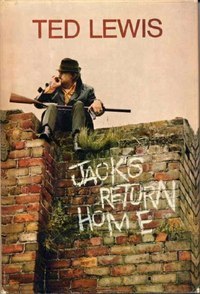 So, Brit Grit is closer to noir, I think, since even the most realistic police procedural is still a paternal pat on the head.
So, Brit Grit is closer to noir, I think, since even the most realistic police procedural is still a paternal pat on the head.
You mention Gareth Spark and Paul Heatley as two current exemplars. Which books of theirs do you recommend? Would you name some other small press practitioners who should be better known?
Marwick’s Reckoning by Gareth Spark and An Eye For An Eye by Paul Heatley are both great and are published by Near To The Knuckle who have also published Ian Ayris’ brilliant One Day In The Life Of Jason Dean. All three books are richly written. Full of light and shade. Also, check out Martin Stanley, Robert Cowan, Tom Leins, Aidan Thorn, LA Sykes, Julie Morrigan. There are plenty of others too!
Where would you place your own work in the Brit Grit spectrum? Who do you look up to?
I’m the light relief. The court jester. A tad bittersweet, maybe, but I write to entertain. The Brit Grit writers I’ve took most from are probably Charlie Williams and Tony Black’s Gus Dury books.
What books are you most looking forward to in 2018?
I’m just keeping a beady, bleary eye out but anything by the above writers.
January 12, 2018
Ernest Matthew Mickler's White Trash Cooking
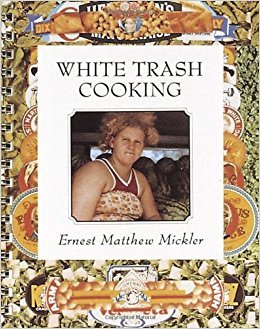
by Michael Adno/Bitter Southerner
In the 1980s, some folks wrote off Ernie Mickler, author of “White Trash Cooking,” as a yayhoo curiosity. Others thought him one of the most brilliant Southern folklorists and photographers of the 20th century. But perhaps most importantly, Mickler left behind a testament to the fact that all Southerners — even those at the margins — have a right to claim their roots.
In spring of 1986, Ernest “Ernie” Matthew Mickler’s “White Trash Cooking” landed on bookshelves across America — a 160-page, spiral-bound anthology of Southern recipes, stories, and photographs.
Oddly enough, damned near everyone loved it. It was immediately revered by literary snobs, Southern aristocrats, Yankees, folklorists, down-home folk, and people on either side of the Mason-Dixon.
The book stirred a firestorm of publicity — partly serious, partly tongue-in-cheek — landing Ernie on “Late Night With David Letterman” and National Public Radio, in magazines like Vogue and People, and in a litany of newspapers. In The New York Times, critic Bryan Miller deemed “White Trash Cooking” the “most intriguing book of the 1986 spring cookbook season.” Even the grand dame of Southern literature, Harper Lee, claimed she had “never seen a sociological document of such beauty — the photographs alone are shattering.” She called the book “a beautiful testament to a stubborn people of proud and poignant heritage.”
January 3, 2018
January Sale Down & Out Books
My publisher, Shotgun Honey, operates under the umbrella of Down & Out Books. D&O is running a 99-cent sale on two ebooks, for a limited time only. D&O has established itself as a clearinghouse for great crime fiction in all its iterations and I knew that before I came to be part of the family, so you can trust me on these. Visit the links below the blurbs to check out the sale.
The demons that drive John “Mocha” Moccia to obsess, to put absolutely everyone under a microscope, and scratch away at every last clue, make him the best hardnosed detective in Brooklyn homicide. But these same demons may very well write the final chapter in his career.
He isn’t the kind of detective to take no for an answer, but in his most recent case answers are damn hard to come by. Partnered with the conscientious Detective Matt Winslow, Mocha endeavors to solve the murder of the wealthy and beautiful Jessica Shannon, a woman who had every reason to live.
As Mocha and Winslow strive to push forward the hands of time and solve the murder, their imposing lieutenant breathes down their necks, suspects are scarce, and all of the evidence seems to be a dead end.
With the last precious grains of sand falling through the hourglass, Mocha pushes ever forward, determined to make an arrest, even if it means this collar will be his last.
There are seven of them. Children—innocents—whose long-buried remains are uncovered by a flash-flood. No one knows who could have committed such a crime. Clues are scarce, and with the media turning the story into a law enforcement nightmare, time is short. Only Wil Hardesty, a private eye who has more in common with the case than anyone knows, is willing to push hard enough—and dig deep enough—to find the cruelest of killers. The killer of The Innocents …
January 2, 2018
Forthcoming from Chris Offutt: Country Dark
ThisApril 2018 book by Chris Offutt seems to neatly cross two of my prime obsessions, crime fiction and Appalachia. Be sure to pick it up. It's a guaranteed good read.
His first work of fiction in nearly two decades, (Country Dark is a taut, compelling novel set in rural Kentucky from the Korean War to 1970.
Tucker, a young veteran, returns from war to work for a bootlegger. He falls in love and starts a family, and while the Tuckers don’t have much, they have the love of their home and each other. But when his family is threatened, Tucker is pushed into violence, which changes everything. The story of people living off the land and by their wits in a backwoods Kentucky world of shine-runners and laborers whose social codes are every bit as nuanced as the British aristocracy, (Country Dark is a novel that blends the best of Larry Brown and James M. Cain, with a noose tightening evermore around a man who just wants to protect those he loves.
Purchase: Amazon, Indiebound, B&N
April 10, 2017
Summer, poem by Brenda Glasure
Some days I remember, but mostly the nights.
We swallowed hard, Kentucky bourbon burn,
Crudités of pretzels and Slim Jims and peanuts.
We rubbed our eyes against the soft of dusk,
birdsong slept, turned crickets and bullfrogs,
the tight buzz of mosquitoes drifted past.
Our legs hugged the curves of the hood on the old Nash,
rusted-out observatory in the middle of the south field.
The radio whispered, thin needle scratched the dirt,
old love songs and poets and steel guitars.
We flung our arms wide in the weak-kneed darkness,
pushed gravity back, wished for power to soar,
slingshot past the sun on our way to Andromeda.
you be the prince, I the dragon.
In the middle of a wheat field, crop circles in straw
the earth spun, a Cohen record in the dark,
the stars whipped, Medusa’s mane,
motes of dust, stunned in a moonbeam.
We made ourselves dance, awkward Jr. High sway,
just to keep from turning to stone.
 Brenda Glasure’s poetry, creative non-fiction, and short stories have appeared in Strong Verse, Driftwood Review, Story Garden 5 and 7 and several other online journals – largely under her pen name, Adria Abbott Glass. She grew up in a small Ohio town, and spent her summers working on her grandparents’ dairy farm. She currently lives on the Northcoast, running a handmade jewelry business and writing.
Brenda Glasure’s poetry, creative non-fiction, and short stories have appeared in Strong Verse, Driftwood Review, Story Garden 5 and 7 and several other online journals – largely under her pen name, Adria Abbott Glass. She grew up in a small Ohio town, and spent her summers working on her grandparents’ dairy farm. She currently lives on the Northcoast, running a handmade jewelry business and writing.
Fried Chicken and Coffee
- Rusty Barnes's profile
- 227 followers


